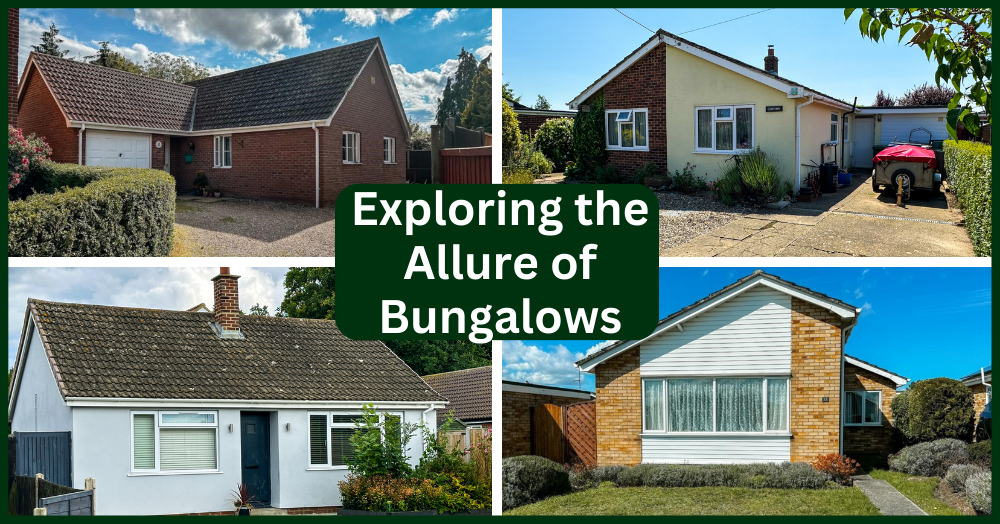When it comes to architectural elegance and cosy living spaces, bungalows hold a special place in the hearts of many. These single-storey homes, often characterised by their spacious surroundings low-pitched roofs, and inviting designs, have an intriguing history that dates back several centuries.
In this blog, we'll delve into the origins of bungalows, their defining features, and why they continue to capture our imagination even in the modern world.
Defining the Bungalow: What Makes It Unique?
A bungalow is a type of house that typically features a single-storey design, although there are variations that include partial second stories. The term "bungalow" is often associated with homes that have a low-pitched roof, wide eaves, and a spacious porch or veranda. These features give bungalows a distinct and inviting appearance that encourages outdoor living and close interaction with nature.
One of the key elements that sets bungalows apart is their emphasis on horizontal lines and a seamless integration with the surrounding environment. This design philosophy not only contributes to the aesthetic appeal of bungalows but also reflects a more casual and laid-back lifestyle.
Origins of the Bungalow: Tracing Its Roots
The origin of the term "bungalow" can be traced back to India, where it is derived from the Hindi word "bangla," meaning "Bengali." In the late 17th century, British colonists in India were introduced to this style of house, which featured a thatched roof, wide verandas, and a practical layout. The open design of these homes allowed for better ventilation in the tropical climate and encouraged a closer connection to the outdoors.
As British colonists returned to their home countries, they brought with them a fascination for the bungalow design. This led to the adaptation and incorporation of bungalow elements into various architectural styles across the world.
Bungalows Around the World: Adaptations and Influences
In the United States, the bungalow gained popularity during the Arts and Crafts movement in the late 19th and early 20th centuries. The style was embraced for its simplicity, craftsmanship, and integration with nature. American architects, such as Greene and Greene, further popularized the Craftsman bungalow, which often featured exposed rafters, intricate woodwork, and a strong connection to the natural environment.
In other parts of the world, bungalows took on different adaptations. In Australia, for instance, the Queenslander bungalow emerged, featuring raised construction to combat flooding and enhanced ventilation.
Timeless Charm: Why Bungalows Still Capture Our Hearts
Despite the passage of time and evolving architectural trends, bungalows continue to captivate homeowners and architects alike. Their charming and approachable designs evoke a sense of nostalgia for simpler times, while their practical layouts make them well-suited for a variety of lifestyles. The connection to nature and the seamless flow between indoor and outdoor spaces offer a respite from the fast-paced world.
In the present day, modern bungalow designs integrate contemporary amenities and sustainable features, making them relevant for eco-conscious individuals seeking a harmonious living environment.
In Conclusion: A Tribute to Timeless Elegance
The bungalow's journey from its humble origins in India to becoming a global architectural icon is a testament to its enduring charm and adaptability. Whether nestled in a quiet suburban neighbourhood or overlooking a breath-taking landscape, bungalows continue to remind us of the value of simplicity, functionality, and our connection to the natural world. As we move forward in the realm of architecture, the bungalow stands as a timeless reminder of the beauty that lies in the fusion of form, function, and a deep appreciation for the world around us.
Here at Millbanks we have a selection of bungalows on the market, if you are interested in viewing or would like further details please Tel: 01953 453838 or Email:propertysearch@milbanks.com
Fairfield Drive Attleborough Guide Price £325,000
Click
HERE for full property details
Arlington Gardens Attleborough Guide Price £300,000
Click
HERE for full property details
Mill Lane Great Ellingham Guide Price £330,000
Click
HERE for full property details
White Hart Street East Harling Guide Price £400,000
Click
HERE for full property details
Edenside Drive Attleborough Offers in Excess of £295,000
Click
HERE for full property details
Norwich Road Attleborough Price Guide: £375,000
Click
HERE for full property details
Well Close Sparham Guide Price £300,000
Click
HERE for full property details
Pound Close Banham Guide Price £325,000
Click
HERE for full property details
















